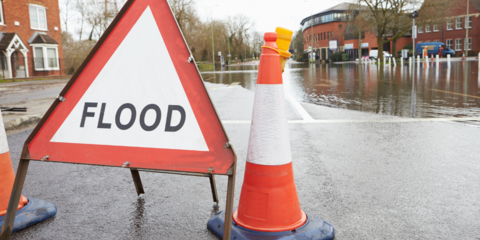
Top Tips for Driving in Rain and Flooding
Find out how to best prepare for setting off in stormy weather
Rain is a fact of life in the UK, and as we hurtle towards the end of the year, we’re likely to see a little more of it — we certainly get more than our fair share of rain here in North Yorkshire! Our journeys rarely stop for rain, so it’s important to know how to keep safe when you’re dealing with wet and rainy road conditions, as your conduct as a motorist should adjust with the weather.
In this article, we’ll share our top tips for driving in the rain, and what to do if you’re presented with flood water.
Leave extra time
Rain on the road poses risks by reducing visibility, increasing stopping distances, and wearing the patience of pedestrians. Rushing around in the rain only heightens these risks, posing a danger not only to you, but other road users too, so plan ahead if the dark clouds descend.
It’s also worth asking yourself whether your journey’s necessary at all — if possible, delay your trip until the rain has eased off.
Check your vehicle
Before you set off, make sure your car is up to the job of driving in the rain. Your windscreen wipers should be fully operational, with intact blades to clear water from your field of vision ASAP. Make sure your tyres have a safe and legal tread depth too, which should be 1.6mm at the very least.
Slow down
It maybe goes without saying that you should slow down if it’s raining, or has been recently, as you’ll find that it takes longer to stop when the road surface is wet.
Stay visible (but don’t dazzle)
Using your lights when visibility is reduced by rain is a must, but using main beam or your fog lights is a big no-no, as this is visually overwhelming for other drivers, and can pose more of a risk than the rain itself. Stick to dipped headlights only.
Be extra careful through standing water
Driving through standing water on the road’s surface at speed can result in aquaplaning, where your car’s tyres lose contact with the road surface itself and you travel instead on the water; your steering goes light, and it’s hard to control the car. If you see standing water ahead, reduce your speed without braking by easing off of acceleration — this goes for if you start aquaplaning too.
Demist your windows
The presence of moisture in the air can steam up your windows, so keep your air conditioning on at a comfortable temperature, with the flow of air directed at the windscreen and the windows, to ensure your vision isn’t impacted.
Keep your distance
Usually, you should always leave a two second gap between your car and the vehicle in front - this means that when the vehicle in front of you passes something stationary at the side of the road, your car should pass it at least 2 seconds later. In wet conditions, increase this to 4 seconds. Not only will you have more chance of stopping clear of the vehicle in front if you need to, but you’ll also be less affected by spray from their wheels.
Should you drive through flood water?
If it’s been raining hard, chances are there’ll be floodwater of varying depths on the road, and you should always avoid driving through flood water if possible. If you go through water that’s too deep it can get into your car’s engine bay, ruin the electrics, and find its way into the cabin itself, resulting in a costly repair.
However, if the water looks more like a shallow puddle, you may want to attempt driving through it. Keep your car in low gear with high revs to create a ‘wave’ so that your car can move through more easily.
